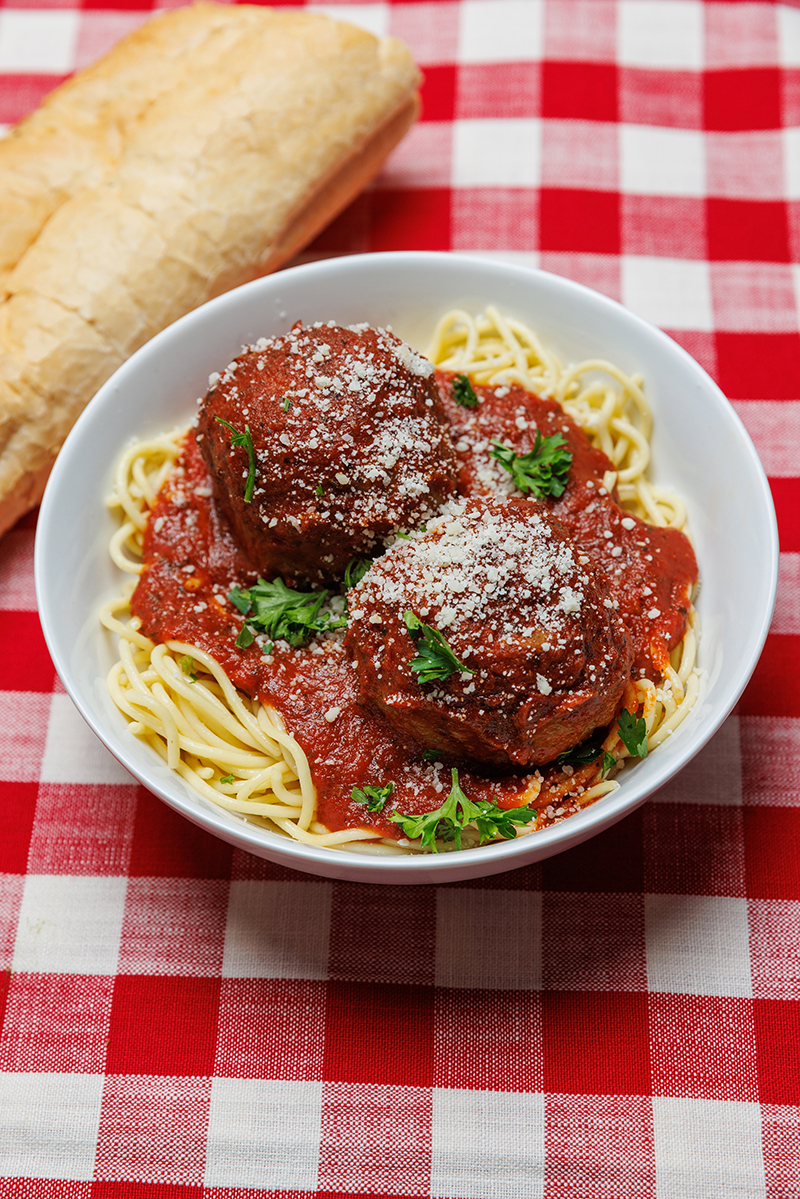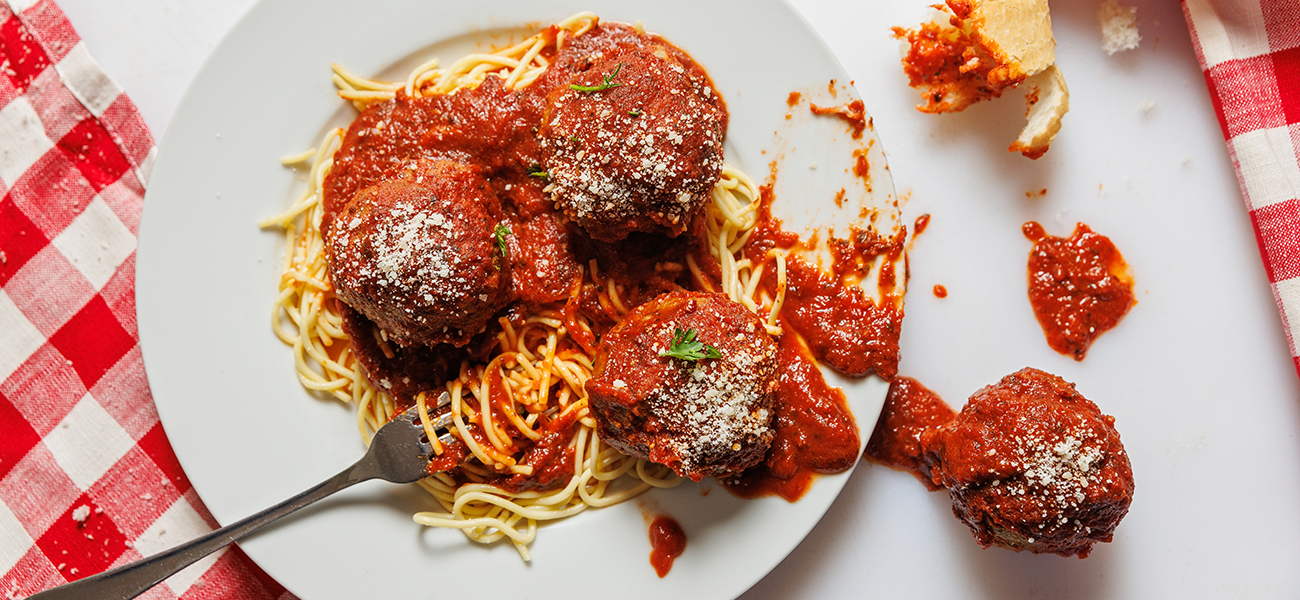From carbonara to primavera, and from Bolognese to garlic and olive oil, there’s no shortage of methods to adorn your pasta. But one sauce trumps all: the ubiquitous red gravy that girds so many old-school Italian restaurant favorites.
“I use my Sicilian grandmother’s recipe,” says Monjunis Italian Café & Grocery founder and owner Jimmy Rosso. The Goodwood Village spot is known for its original red sauce, a century-old formula that’s unapologetically sweet. “She’d make it in a two-gallon pot and let me watch.”
Rosso’s grandparents were part of the wave of Sicilian immigrants who arrived in New Orleans in the early 1900s. After working in the Crescent City, the couple migrated north to Shreveport and opened small Italian dry goods stores, he says. By the time he was a senior in high school, the family’s food-centric culture propelled Rosso to enter the catering business—a pursuit that ultimately led him to open the first Monjunis in Shreveport in 1983. The restaurant debuted in Baton Rouge in 2005.
|
|
|
Monjunis’ red sauce has been so popular that for Rosso’s first decade in business in Shreveport, he obliged customer requests to bring it home in jars. But demand outpaced this cottage approach, prompting him to eventually take the product to a south Louisiana copacker. A bottled version of the original sweet sauce, along with a lower-sugar tomato basil option, are sold in the restaurants and in supermarkets in Shreveport and Baton Rouge. Rosso sells 300-600 cases of the sauce a week to Capital City outlets alone. Meanwhile, the Baton Rouge restaurant makes 12 six-gallon pots in the morning, which are usually depleted by the end of the day.

Rosso says the secret to the sauce is its simplicity.
“It’s probably only got six ingredients,” he says. “It’s also a quick cooking sauce.”
But the real magic may lie in that the original red sauce is also the poaching medium for the restaurant’s meatballs. Rosso’s kitchen team drops in hand-rolled, uncooked beef meatballs, enabling their rendered fat to impart flavor. The completed gravy is draped over several of the Monjunis anchor dishes, including Chicken Parmesan, Shrimp & Eggplant Extraordinaire, Lasagna and Spaghetti.
“My grandmother called it gravy. My grandfather called it sauce,” he says.
But for Rosso, it’s just what he grew up with. monjunis.com
 Know your sauces
Know your sauces
Marinara is perhaps the most iconic pasta sauce, but there are many other Italian classics you’ll find reimagined around the Capital Region.
Aglio e olio
Garlic and olive oil provide a masterclass in how delicious simplicity can be.
Try it at: DiGuilo Bros. Italian Cafe. The G.O.P also features parsley.
Arrabbiata 
Red sauce, but make it spicy. Garlic, tomatoes, chili pepper and Pecorino Romano mingle for a creamy-with-a-kick sauce often served with penne.
Try it at: La Contea
Alfredo
In Italy, this Parmesan sauce traditionally owes it richness to butter. Here in America, we add lots of cream.
Try it at: The Little Village
Cacio e pepe
A simple blend of cheese, pepper and sometimes butter are tossed with a twirling pasta like spaghetti.
Try it: Pizza Byronz. The restaurant has a specialty pizza version.
Carbonara
A creamy, silky sauce that is emulsified with pasta water and raw eggs.
Try it at: Palermo Ristorante
Pesto
This brilliant green sauce gets its color from basil and its texture from pine nuts, grated hard cheese, garlic and olive oil.
Try it at: Gino’s talian Restaurant
Puttanesca
Italy’s pantry-staples pasta is a mishmash of flavorful ingredients like capers, olives, garlic and anchovies.
Try it at: Nino’s
|
|
|
Vodka
A splash of vodka emulsifies velvety, caramelized tomatoes.
Try it at: Fratelli’s Italian Grill
This article was originally published in the February 2024 issue of 225 magazine.





